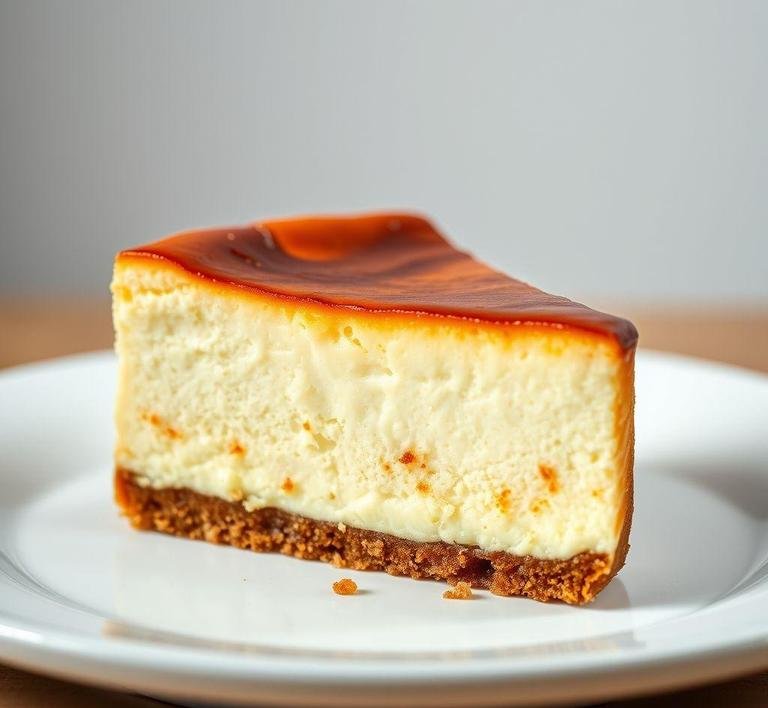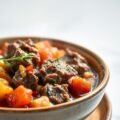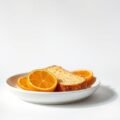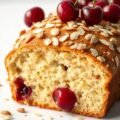Let me take you back to a rainy Saturday afternoon last winter. My kitchen was warm from the oven, the scent of caramelized sugar and cream cheese curled around the room like a hug and I was scraping the last bit of batter into a springform tin. That was the day I first made Nigella Lawson’s Burnt Basque Cheesecake. and I’ve never looked back.
Now, if you’re new to the idea of a cheesecake being "burnt," don’t be alarmed. That’s the magic of it. The Burnt Basque Cheesecake is a rustic beauty born in the Basque region of Spain, known for its deeply bronzed top and trembling center. Unlike your classic New York cheesecake that’s all about precision and perfection, this one celebrates imperfection. Nigella’s version takes it to another level. richer, moodier and gorgeously unapologetic. It’s bold, a little dramatic and if a dessert could wear a red lip and wink at you from across the room, this would be it.
Nigella Burnt Basque Cheesecake Recipe
Ingredients Needed

There’s something I adore about a short ingredient list that delivers maximum drama. Here’s what you’ll need and I promise, most of it you probably already have on hand:
- 600g full-fat cream cheese, at room temperature (don’t skimp on fat. this isn’t the time for guilt or substitutes)
- 250g caster sugar (yes, it’s a lot but it melts into caramel perfection)
- 3 large eggs
- 3 large egg yolks (don’t skip this. they bring the silkiness)
- 1½ teaspoons vanilla extract
- ¼ teaspoon fine sea salt (this cuts through the richness like a whisper)
- 300ml double cream
- 25g plain flour, sifted
I remember making this the first time and spilling a bit of cream while measuring. My dog, always my trusty kitchen companion, cleaned it up before I could blink. The cream, the eggs, the cheese. it all felt so indulgent, almost wicked but in the most wonderful way.
Equipment Needed
Here’s where things get even more relaxed. No water baths. No delicate unmolding. Just simple tools and a little trust in the process:
- A 23cm (9-inch) springform tin
- Baking parchment, enough to line the tin with a good overhang
- A stand mixer or hand mixer (or sturdy arms and a whisk if you’re feeling brave)
- A sieve for the flour
- A rubber spatula
- Your oven, set to a roaring 200°C (fan), 220°C (conventional) or about 425°F. hot enough to char the top beautifully
Lining the tin is almost an art in itself. Nigella recommends crinkling the parchment first and I can confirm. it makes it easier to mold and gives the cheesecake that dramatic, craggy edge.
Instructions To Make Nigella Lawson’s Burnt Basque Cheesecake
Set aside any perfectionism. That’s not invited here. What you want is to lean into the chaos. because that’s where the magic lives.
- Preheat your oven to the blistering high temp (200°C fan/220°C regular). This is what gives the cheesecake that signature scorched top.
- Line your springform tin with parchment, crinkling it first so it fits more easily. You want plenty of overhang. this cake rises like a diva in heels, so give it room to do its thing.
- In a large bowl (or your stand mixer), beat the cream cheese and sugar together until smooth and creamy. Don’t rush this. Let the sugar dissolve into the cream cheese and become one.
- Add the eggs and yolks one at a time, mixing well after each. At this point, the batter is glossy and golden and you might be tempted to taste it. (I always do.)
- Stir in the vanilla extract and salt, then gently fold in the double cream.
- Sift in the flour, folding it in gently. You don’t want any lumps but you don’t want to overmix either. Think velvet, not concrete.
- Pour the batter into your prepared tin, then slide it into the oven.
- Bake for 50 minutes or until the top is a dark amber, even verging on black in spots. The center should still have a wobble. like the middle of a crème brûlée when you jiggle the pan.
- Let it cool completely in the tin. It’ll sink a little as it cools, cracking and settling into itself like a sigh of relief. Chill it in the fridge for several hours or overnight. this isn’t a cake you want to rush.
What I Learnt
Here’s the thing: baking this cake taught me to let go. I’m usually the type who measures flour with surgical precision and checks the oven window like a nervous parent on the first day of school. But Nigella’s Burnt Basque Cheesecake doesn’t allow for control freakery.
It reminded me that the best things in life. and in the kitchen. often come when we let go of perfection. The charred top, the sunken middle, the craggy edges? That’s character. That’s soul. And the taste? Oh, it’s absurdly creamy with a depth of flavor that hits somewhere between toasted marshmallow and vanilla custard. It’s not just a dessert. It’s a feeling.
And there’s something almost intimate about slicing into it. like opening an old book and finding a love letter tucked inside.
FAQs
What Makes Nigella Lawson’s Burnt Basque Cheesecake Different From Other Cheesecakes?
Nigella’s Burnt Basque Cheesecake stands out because of its rich, creamy texture and the dramatic burnt top. The cheesecake is baked at a high temperature, causing the edges to caramelize and turn deep brown while keeping the inside smooth and velvety. It’s intentionally ’imperfect’ in appearance, which adds to its charm.
Do I Need A Springform Pan To Make Nigella’s Burnt Basque Cheesecake?
Technically, no! While a springform pan is commonly used for cheesecakes, Nigella’s recipe doesn’t require a perfectly shaped pan. In fact, she even suggests using a regular cake tin lined with parchment paper. The edges of the parchment help create those beautiful burnt, irregular edges that are so iconic in this cheesecake.
How Can I Tell If Nigella’s Burnt Basque Cheesecake Is Done Baking?
The key to knowing when it’s done is in the wobble! It should be golden brown on top with a few cracks forming on the surface, but when you give the pan a gentle shake, the middle should still wobble a bit like a custard. Don’t worry about the cracks-they’re part of the cheesecake’s signature look.


